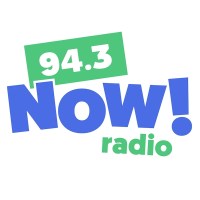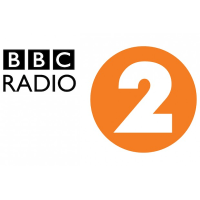
When you talk about what constitutes “real radio,” as I did a few weeks ago, the “live and local” question is never far behind. Just asking the question on Facebook prompted a heated debate about whether the online radio stations that many friend and readers run could be “real radio.” It also steered us back to the ongoing discussion about the value of “live and local” thanks to two responses from other respected industry observers.
I had brought up the U.K.’s Boom Radio, which launched as IP only before moving to the U.K.’s relatively vital DAB tier. Boom’s hosted, full-service presentation made them “real radio” from the beginning, I thought, even before being on a broadcast frequency confirmed it. That led radio/podcasting expert James Cridland to point out that “Boom Radio is also entirely voice-tracked. There isn’t a single live [break] on that radio station. I’d argue that it doesn’t matter.” Boom, on any platform, met his definition of radio as “an audio-first shared experience, with a human connection.”
Then Jeff Vidler of Signal Hill Insights published an article calling for a “radio refresh” and a refocusing on the shared experience. Vidler brought up CKNO (Now 102.3) Edmonton, Alberta, the instantly successful full-service AC inspired by the U.K.’s BBC Radio 2. In the twelve years since its launch, Now has prompted the also successful CKCE (Today Radio) Calgary and, more recently, sister CHNW (Now 94.3) Winnipeg. The latter are “live and local.” The former is national, but very much dependent on “real time.”
Over the years, “Live and Local” has been dismissed as quaint sloganeering by those broadcasters who are not live and/or local—whether by choice or necessity. They’ve had ammo since the syndicated days of Howard Stern, then in binge-watched TV shows, and now in podcasting. They ask, why wouldn’t you want a super-station full of great on-air personalities, even if it comes from outside the market or isn’t unfolding exactly in real time? (I would, but that’s not usually what national work-parts get you.)
But when a radio experience unfolds in real time, it still matters. Same goes live and local. In the last Edmonton book, Now 102.3 was second (7.3-8.4) 12-plus. In the just released U.K. ratings, Radio 2 was up from a 16.2 share 15+ in the fall (after a COVID-driven ratings disruption) to a 16.4 share nationally. It seemed like a good time for a “Fresh Listen.” Over the last few days, I’ve checked out Now 102.3 in mornings and afternoons, and Radio 2 with veteran personality Steve Wright.
 The Radio 2/Now 102.3 playbook has been based on ongoing listener interaction, centered around on-air topics lasting roughly an hour. Most of the listener content comes from texts now, punctuated by a few phone calls per hour.
The Radio 2/Now 102.3 playbook has been based on ongoing listener interaction, centered around on-air topics lasting roughly an hour. Most of the listener content comes from texts now, punctuated by a few phone calls per hour.
In afternoons, Now 102.3 was typically heavily structured along the lines of what I’ve heard over the years. Night jock Brayden Mack was in for afternoon host Rachel Day, who was out with COVID. Mack is Day’s regular fill-in, to the point where he has his own “Rachel Day show with Brayden Mack” sweeper. His topic that hour was inspired by a Reddit thread on “songs that are used to teach kids.” He was going for the songs that your teacher might have used as a mnemonic device, but things quickly expanded to include:
- A two-year-old who could now sing the alphabet because of Gayle’s “ABCDEFU”;
- Kids who learned to spell B-A-N-A-N-A-S from “Hollaback Girl”;
- The teacher who taught her kids to multiply with “Step By Step” from New Kids on the Block, including teaching them a dance;
- The not-quite-educational-as-intended example of the toddler who came in the house singing Jeremih’s “Birthday Sex” after hearing it on the radio;
- Plenty of songs actually intended for kids from “Don’t Put It in Your Mouth” to “Don’t Bite Your Friends.”
Mack got a full hour out of this topic, despite professing later that he wasn’t sure if listeners would respond. The topic was good for five breaks (including his opening break with the set-up). The next hour was “what bad thing happened because you left a window open”?
Now 102.3’s Crash & Mars is a more typically structured morning show—centered on the interaction between the host couple and punctuated by listener texts, some of them read individually, some of them just characterized as “a lot of you are saying that…” Given the relatively small number of successful major-market morning shows to emerge in the last decade, it’s a show that anybody who works with talent should hear, and full shows are available on demand.
Over the course of the hour, the topics included:
- A story about the most romantic hotels in the world, which became a listener prompt for most romantic Edmonton hotels. Some listeners suggested low-rent local motels. One nicer one was closed now because of COVID.
- That led to a discussion the theme rooms in the hotel in the mammoth West Edmonton Mall, ranging from family-friendly to one with a stripper’s pole. Listeners recalled being in some of those rooms as kids. Others had been conceived in them. Crash and Mars had both tried out the pole and struggled to remember if it had been with each other.
- Tom Brady’s retirement and whether he should have thanked the Patriots—the one common-currency topic I heard discussed;
- The female Uber driver who inadvertently ended up driving her new boyfriend and his other date;
- The Queen’s Jubilee plate with a typo and whether you or your family cared about Royal Family collectables (there were plenty of responses on this);
- The man who grossed out a first date with a pile of used chewing gum. There were plenty of responses on this, too, including a caller (one of the few actually aired) who had encountered an uncle’s dashboard ashtray full of fingernail clippings.
Wright’s hour was also varied. The hour began with about 20 minutes of oldies chosen by a single listener, who was also interviewed. There was also an interview with American comedian Rich Hall. But there was also an ongoing conversational thread on “the messiest person in your household” that was carrying forth from a previous hour.
The world’s tumult is a minefield for on-air personalities and each nation has their own version—Canada’s recent truckers’ convoy; the U.K.’s revelations that government officials partied during lockdown. I follow a lot of Canadian personalities on Twitter and their feeds are full of the nasty notes they got from listeners for even daring to wade into vaccines or the convoy.
On Radio 2, you heard about COVID and controversy during the news. Whenever I’ve heard the hosts’ own topics on Radio 2 or Now and its sisters, they’ve been light, of the sort that Cridland often dismisses as “favorite biscuit” topics (or favorite cookie, for Americans), or whether pineapple belongs on pizza. I’ve said through COVID that part of what our full-service stations can do is guide us through the crisis, but clearly diversion counts just as much. It’s the connection that people need. (By the way, check out my “Lost Factor All-Time Top 100” article on forgotten hits this week.)
What content listeners want is similar to the issue of returning to the workplace. Some listeners will be happy working at home for the foreseeable future. Some can’t wait to discuss each other’s weekends around the water cooler again. During COVID, radio has been where those discussions can take place.
Because of Radio 2 and Now 102.3, you tend to hear more listener topics in the course of listening to any British or Canadian radio. American broadcasters seized on the first American success story of the Adult Hits “Jack-FM” format in the mid-‘00s as another example of why stations didn’t need jocks to have stationality. This month, CJAQ (Jack-FM) Calgary, one of the first Canadian Jack-FMs added personality shows in both middays and afternoons.
American broadcasters should have been seizing on Adult Hits based on its success at CFWM (Bob 99.9) Winnipeg and Calgary’s Jack, among others. They waited until there was an American success story instead. Have they missed the Now FM story because it’s Canadian? Or because of the cost of creating full-service radio? Probably both, but further engaging with listeners is probably key to the survival of American broadcasters whether it’s on the national super-stations that I would like to see emerge, or locally. I can offer the surprise success of KDRI (The Drive) Tucson, Ariz., a frequent presence in this column, into evidence as well.
Radio 2 is clearly not local, but has always had the advantage of being a unifying experience for a nation with one time zone. Now 102.3 took the national consumer press story about “most romantic hotels” and found the local angle which turned out to be integral to the bit. Boom is proof that you don’t need to be in-real-time to provide a “real radio experience.” Radio 2 is proof that national can be as impactful as local. Now 102.3 is proof that you should not use either of those examples to blithely dismiss “live and local.”
